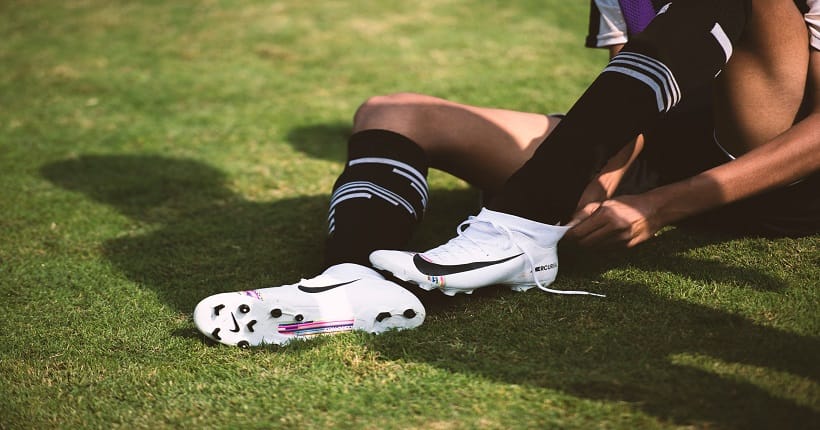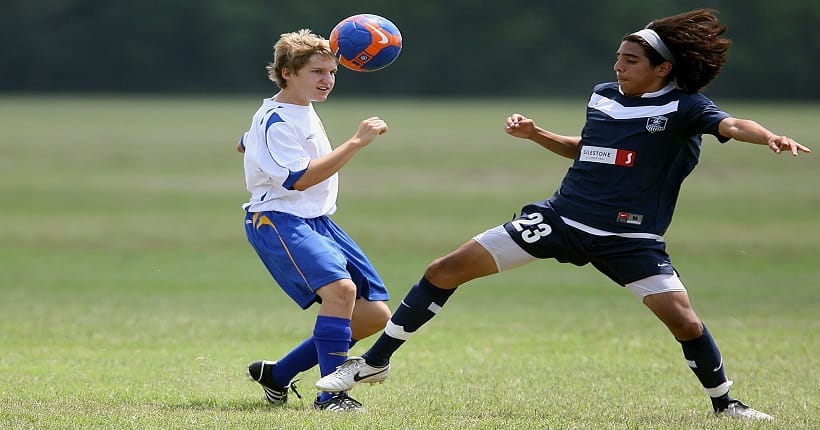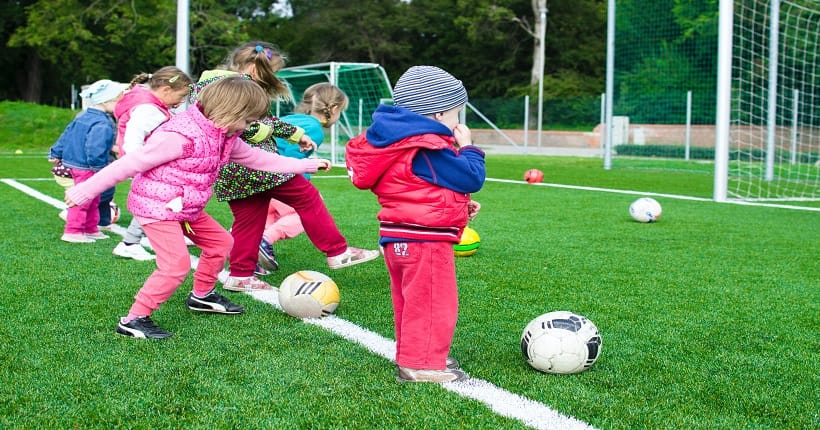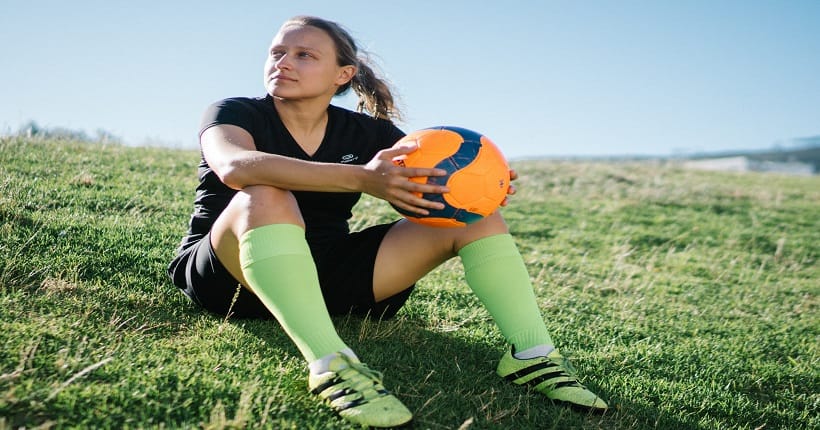How To Be A Good Defender In Soccer?
To be a good defender in soccer, focus on positioning and anticipation skills, while also maintaining good communication with teammates for effective coordination on the field. In soccer, the role of a defender is crucial in protecting the team’s goal and preventing the opposition from scoring.
This requires a combination of physical attributes, tactical awareness, and technical proficiency. In order to excel in this position, defenders must have a strong understanding of defensive principles, such as marking opponents, intercepting passes, and making well-timed tackles. Additionally, they should possess good spatial awareness, quick reactions, and the ability to read the game.
By mastering these qualities, a soccer player can become a reliable and effective defender.
Master The Tactical Skills
Master the Tactical Skills
Being a good defender in soccer requires more than just physical attributes. It demands a deep understanding of the game’s tactical aspects. Mastering the tactical skills not only enhances your individual abilities but also contributes to the overall defensive strength of your team. In this section, we will delve into the crucial tactical skills that every aspiring defender should focus on to become a force to be reckoned with on the soccer field.
Defensive Roles and Responsibilities
To excel as a defender, it is vital to have a clear understanding of the various defensive roles and responsibilities within your team. Each player has specific tasks that they need to fulfill in order to maintain a solid defensive structure. Here are some key considerations:
- Communicate with teammates: Effective communication with your fellow defenders, midfielders, and goalkeeper is crucial. It helps to coordinate movements and ensure everyone is aware of their defensive responsibilities. Clear and concise communication can prevent defensive gaps and minimize the chances of conceding goals.
- Track opponents: As a defender, one of your primary roles is to track and mark opposing attackers. By closely monitoring their movements and staying with them wherever they go, you reduce their effectiveness in generating scoring opportunities.
- Covering for teammates: There may be instances when your teammates are out of position or engaged in other areas of the field. In such cases, it is important to provide cover and temporarily take over their defensive duties to maintain defensive solidity.
- Clearing danger: When under pressure, defenders must clear the ball effectively and safely from dangerous areas. Whether it’s through a timely interception, well-executed tackle, or precise header, the ability to clear the danger helps to minimize the opponent’s attacking threat.
Learn Defensive Positions And Communication
A solid defensive unit relies on players understanding and executing their respective positions effectively. In addition, effective communication among defenders is crucial to ensure everyone is in sync. Here are some essential aspects to consider:
- Study defensive formations: Familiarize yourself with different defensive formations such as 4-4-2 or 3-5-2. Understand the strengths, weaknesses, and positioning responsibilities associated with each formation. This knowledge will aid decision-making on the field and allow you to adapt to various tactical situations.
- Organize the defensive line: As a defender, you often have a clearer view of the entire field. Utilize this advantage to communicate and organize your defensive line. Ensure that your teammates are properly positioned, maintain the correct distance from each other, and move as a unit to frustrate the opponent’s attacking efforts.
- Provide timely instructions: During the game, be vocal and provide your teammates with timely instructions. This may involve calling for cover, alerting others to approaching attackers, or directing teammates to mark specific opponents. Clear and concise instructions help to maintain defensive cohesion.
- Body positioning and gestures: Sometimes, communication may need to extend beyond verbal cues. Proper body positioning and gestures can be effective in conveying messages quickly to your teammates. Simple actions such as pointing to open space or signaling to press an opponent can enhance collective defensive performance.
Develop Effective Marking Techniques
Successful defending often hinges on your ability to effectively mark opponents and deny them time and space. Here are some techniques to develop:
- Tight marking: Get close to the opposing attacker by maintaining a tight defensive position. This reduces their chance to receive the ball comfortably and puts pressure on them to make hasty decisions.
- Anticipate movements: Watch the movements of the opponents and anticipate where they might go. This allows you to position yourself more effectively, cut off passing lanes, and intercept or block the ball.
- Stay goal-side: Always prioritize positioning yourself between your opponent and the goal. This makes it harder for them to score and provides better control over their movements. It also reduces the likelihood of them getting behind your defensive line.
- Physical presence without fouling: Use your body to make it difficult for the attacker to maneuver. Maintain a physical presence and use legal techniques such as shoulder-to-shoulder challenges or blocking runs to disrupt their rhythm. Avoid unnecessary fouls that could give away free-kicks or penalties.
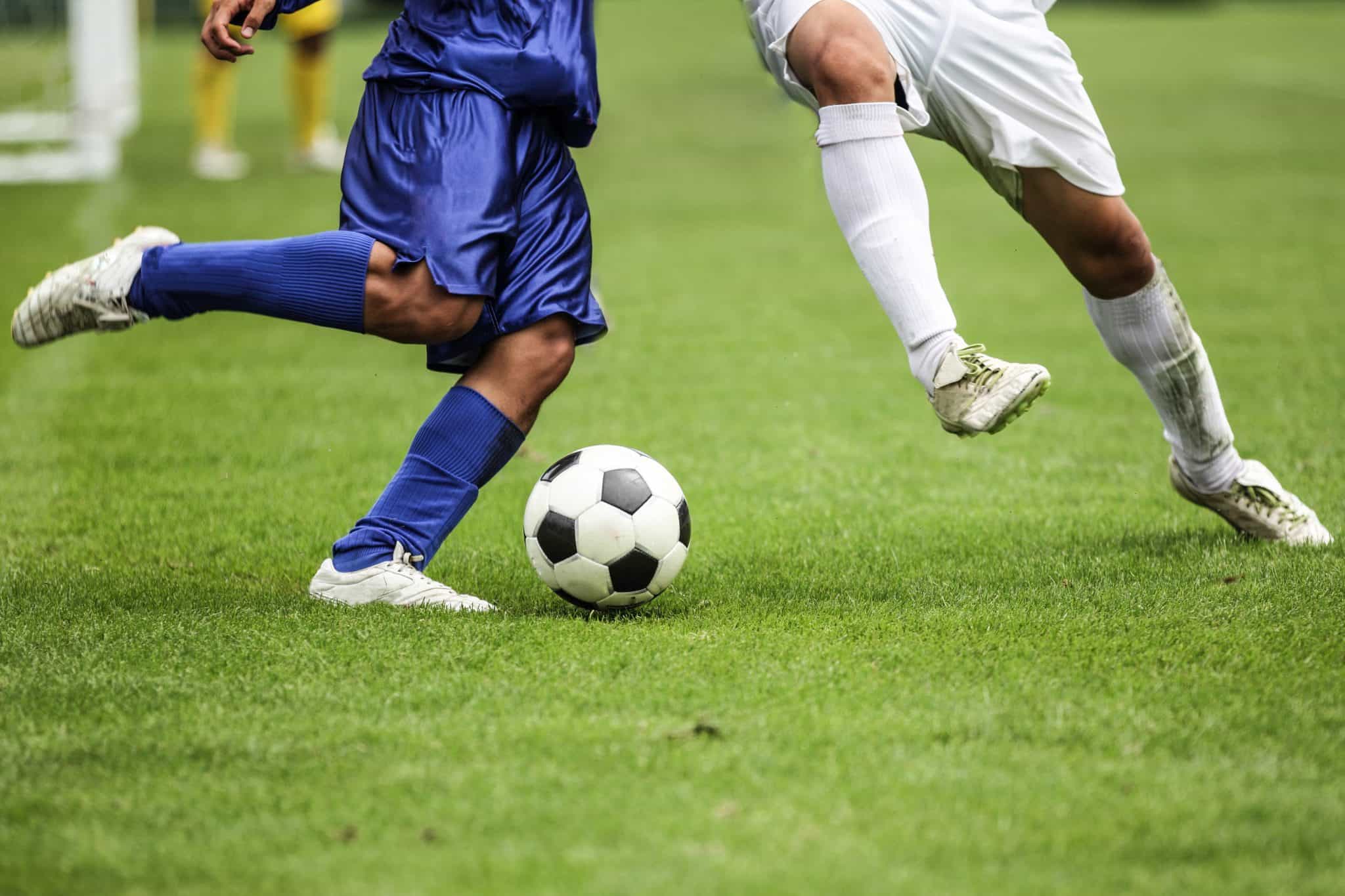
Credit: completesoccerguide.com
Enhance Physical Fitness And Strength
Being a good defender in soccer requires a combination of skills, including the enhancement of physical fitness and strength. In order to excel in this role, defenders need to focus on improving their speed, agility, endurance, stamina, strength, and power. By prioritizing these areas of physical fitness, defenders can become more effective at thwarting opponents and protecting their team’s goal.
Improve Speed And Agility
Speed and agility are crucial attributes for a defender in soccer. The ability to quickly change direction, sprint, and react to the movements of the opposing players can make all the difference in preventing goals. To enhance speed and agility, defenders can incorporate certain drills and exercises into their training routine:
- Sprint intervals: Incorporate short sprints into your training sessions. Focus on explosiveness and quick bursts of speed.
- Ladder drills: Utilize agility ladders to work on footwork and coordination. These drills can improve speed, agility, and overall body control.
- Cone drills: Set up cones in various patterns and practice quickly maneuvering around them. This helps develop quick reflexes, enhances agility, and improves spatial awareness.
Build Endurance And Stamina
Defenders often find themselves enduring long stretches of play without much rest. Building endurance and stamina is essential to maintain a high level of performance throughout the entire game. Here are a few strategies to improve endurance and stamina:
- Interval training: Alternate between periods of high-intensity exercises and lower-intensity recovery periods. This type of training improves cardiovascular fitness and increases endurance.
- Long-distance runs: Incorporate longer runs into your training routine to build up your endurance levels gradually. These runs can be done at a steady pace or at varying intensities.
- Circuit training: Combine strength and cardio exercises in a circuit format. This not only helps improve stamina but also enhances overall body strength.
Enhance Strength And Power
Being physically strong is essential for defenders, as it enables them to win physical battles against opponents, maintain their position, and clear the ball effectively. To enhance strength and power, defenders can focus on the following:
| Weight training: | Incorporate exercises such as squats, deadlifts, lunges, and bench presses into your strength training routine. These compound exercises target multiple muscle groups and help develop overall strength and power. |
| Explosive exercises: | Include plyometric exercises like box jumps, medicine ball throws, and power cleans to improve explosive power. These exercises mimic soccer-specific movements and help defenders generate force quickly. |
| Core exercises: | A strong core is vital for stability and balance. Incorporate exercises like planks, Russian twists, and hanging leg raises to strengthen your core muscles. |
By focusing on improving speed, agility, endurance, stamina, strength, and power, defenders can enhance their overall physical fitness and become effective guardians of their team’s goal. Incorporating these training techniques into their routine will help them excel in their defensive role and contribute significantly to their team’s success.
Polish Technical Abilities
Being a good defender in soccer requires a combination of mental agility, tactical awareness, and physical prowess. But, the foundation of any accomplished defender lies in their technical abilities. An effective defender needs to have exceptional tackling techniques, interception skills, and the ability to head and clear the ball with precision. In this article, we will delve into each of these areas in detail and provide you with practical tips on how to polish your technical abilities as a defender.
Perfect Tackling Techniques
Tackling is an essential defensive skill that every defender needs to master. If executed with precision, it can help you dispossess the attacker and regain control of the ball for your team. To perfect your tackling technique, consider the following:
- Stay on your feet: When attempting a tackle, it’s crucial to maintain your balance and avoid unnecessary fouls. Stay low, keep your body upright, and focus on timing your tackle correctly.
- Timing is key: Wait for the right moment to make your move. Attempting a tackle too early or too late gives the attacker an advantage. Observe the attacker’s movements closely, anticipate their actions, and pounce when they are vulnerable.
- Use your body: Position your body in a way that makes it difficult for the attacker to maneuver past you. Keep one foot slightly in front of the other, and use your arms for balance and to shield the ball.
- Focus on ball contact: Aim to make contact with the ball, not the opponent. This reduces the risk of committing a foul and increases the chances of successfully winning the ball.
- Practice, practice, practice: Regularly engage in tackling drills to sharpen your technique. Work on your timing, footwork, and body positioning until tackling becomes second nature to you.
Develop Interception Skills
Intercepting passes is another critical ability that separates good defenders from the rest. To develop your interception skills, keep the following tips in mind:
- Read the game: Anticipate the opposition’s passes by analyzing their positioning and movement patterns. Learn to recognize their preferred passing lanes and use that knowledge to position yourself strategically.
- Communication is key: Effective communication with your teammates can help coordinate interceptions. Verbally communicate with your fellow defenders, provide cover, and intercept passes together to disrupt the opposition’s attacking flow.
- Stay proactive: Don’t passively wait for the ball to come to you. Be proactive in cutting off passing lanes and intercepting the ball before it reaches its intended target. Move quickly, position yourself well, and be ready to react.
- Sharpen your peripheral vision: Developing good peripheral vision will aid you in monitoring the movement of your opponents and quickly identifying potential interception opportunities.
- Anticipate and react: Train yourself to anticipate the trajectory of the pass. Once you anticipate the pass, react swiftly by intercepting the ball successfully.
Improve Heading And Clearing
Heading and clearing the ball effectively are crucial skills for defenders, especially when dealing with aerial balls and set pieces. To improve your heading and clearing abilities:
| Exercise: | Instructions: |
| Heading accuracy: | Set up a practice drill where you head the ball toward a designated target. Focus on directing the ball with accuracy and using different techniques, such as glancing headers or powerful headers. |
| Clearing under pressure: | Simulate game scenarios where you practice clearing the ball under pressure. This will help you develop composure and decision-making skills in high-intensity situations. |
| Timing and jumping: | Work on improving your timing and jumping ability to win aerial duels. Practice jumping exercises and drills that simulate challenging aerial situations. |
| Positioning: | Ensure proper positioning when preparing to head or clear the ball. Position yourself in a way that maximizes your reach and jumping ability. |
| Regular practice: | Consistently train your heading and clearing skills to gain confidence and improve your technique. Regular repetition will help you refine your abilities and become more reliable in these crucial defensive actions. |
Frequently Asked Questions For How To Be A Good Defender In Soccer?
How Do I Get Better At Defender In Soccer?
To improve as a soccer defender, focus on these key areas: develop your speed, agility, and strength; practice positioning and marking skills; work on your communication and teamwork; study the game and learn from experienced defenders; and constantly strive to improve your decision-making abilities.
What Are The 5 Defending Principles Of Soccer?
The 5 defending principles of soccer are: pressure, cover, balance, compactness, and control.
How Do You Train A Defender In Soccer?
To train a defender in soccer, focus on improving their tackling, marking, and positioning skills. Incorporate drills that simulate game situations, such as one-on-one challenges and group defending exercises. Encourage communication and teamwork to enhance their ability to coordinate with teammates.
Emphasize agility, speed, and agility in their training routine to enhance their physical capabilities.
How Do You Know If You Are A Good Defender In Soccer?
To determine if you’re a good defender in soccer, assess your ability to block opponents, anticipate plays, and effectively communicate with your team. Additionally, focus on maintaining a strong position, making timely tackles, and possessing good speed and agility. Overall, a good defender plays a crucial role in preventing the opposing team from scoring goals.
How Can I Improve My Defending Skills In Soccer?
To improve your defending skills in soccer, focus on positioning, communication with teammates, and studying opponents’ tactics.
What Are The Key Qualities Of A Good Soccer Defender?
A good soccer defender should possess attributes such as strong tackling, anticipation, agility, coordination, and the ability to read the game.
Conclusion
Becoming a proficient defender in soccer requires a combination of skill, strategy, and dedication. By mastering the art of positioning, tackling, and communication, you can be a valuable asset to your team’s defense. Remember to stay alert, anticipate the opponent’s moves, and never underestimate the power of teamwork.
With practice and perseverance, you can excel as a defender and influence the outcome of the game. So lace up your boots, embrace the challenge, and elevate your performance on the soccer field.



